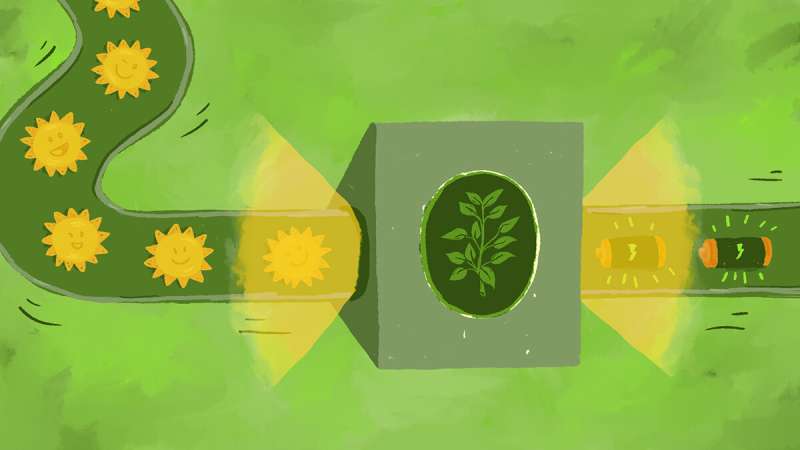Our next renewable energy source could be an artificial leaf
LSU researchers are exploring new ways to use the oldest energy source on our planet—sunlight—to create truly green energy on demand. You’ve already heard of solar cells and solar panels, but David Vinyard, assistant professor in LSU’s Department of Biological Sciences, is looking at another method of harnessing the power of the sun: Photosynthesis.
The general idea of photosynthesis—a plant’s ability to absorb sunlight and use that energy to make sugars, or biomass, from water and carbon dioxide—is well-known. But the exact mechanics are still being discovered. Vinyard tracks the process atom by atom, electron by electron.
“It’s shocking how much we don’t know about how nature converts light energy to chemical energy considering it’s happening at such a massive scale,” Vinyard said. “If we can learn the chemical and physical mechanisms used by nature, we can give those blueprints to chemists and engineers to develop clean energy conversion devices. Essentially, an artificial leaf.”
An artificial leaf could be an inexpensive and efficient solar fuel cell. It could use light energy to strip electrons and hydrogen atoms from water, which then could be recombined to create hydrogen gas, a green fuel. Today, about 95 percent of all hydrogen is produced from natural gas, a fossil fuel, while an artificial leaf could produce it on demand using only water and sunlight.
“As the global and domestic energy markets become increasingly sensitive to management of carbon associated with our traditional energy sources, Dr. Vinyard’s work has the potential to help Louisiana diversify its energy economy by helping to provide more options in the makeup of our energy sources,” said Jason Lanclos, director of the State Energy Office at the Louisiana Department of Natural Resources.

Vinyard, who received a U.S. Department of Energy Early Career Award in 2019 to study energy conversion, researches the minute chemical mechanics of photosynthesis, a process that has been happening for billions of years. Vinyard’s lab is conducting what he calls “very fundamental research,” tracking the process atom by atom, electron by electron, to map out exactly how the chemical bonds are broken and formed through each miniscule step.
Another important component about going the photosynthetic route to create clean energy, according to Vinyard, is that natural photosynthesis uses only Earth-abundant materials. Many catalytic systems being developed by chemists and engineers still rely on rare elements like platinum, rhodium, and palladium, which are not only expensive but are also only found in select places.
An artificial leaf used for clean energy production would have two parts, according to Vinyard. First, a catalyst would use light energy to strip electrons and hydrogen atoms from water, or H2O. Ideally, this process would use low-cost materials.
“Nature can split water molecules using abundant calcium and manganese, and that’s remarkable,” said the researcher. In the second part, the released hydrogen atoms and electrons are recombined to generate hydrogen gas, H2, which can be used as a fuel.
“If we can learn how natural photosynthesis splits water using sunlight, then we could apply this knowledge towards the development of inexpensive and efficient solar fuel cells,” Vinyard said. “In emergencies, fuel could be generated on demand using only water and sunlight. One day—hopefully soon—this type of technology could help us transition away from the widespread use of fossil fuels.”
Citation:
Our next renewable energy source could be an artificial leaf (2022, January 24)
retrieved 24 January 2022
from https://techxplore.com/news/2022-01-renewable-energy-source-artificial-leaf.html
This document is subject to copyright. Apart from any fair dealing for the purpose of private study or research, no
part may be reproduced without the written permission. The content is provided for information purposes only.
For all the latest Technology News Click Here
For the latest news and updates, follow us on Google News.
